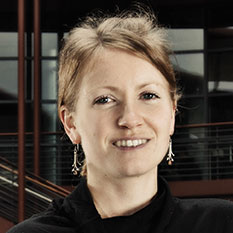Scott Klemmer on the power of naïveté
Medicine X is looking forward to uniting a wide variety of experience and talent this September. Not sure how you’d fit in? Consider this, a Q&A with advisory board member Scott Klemmer, your call to action.
You’re a professor of computer science at Stanford, where you co-direct the Human-Computer Interaction Group. Why did you join the Medicine X team?
A lot of the best computer-science research is driven by real-world challenges. Many aspects of medical care involve tight-knit collaboration and challenging decision-making. Designing technologies that can help is both important and difficult.
Can you give me a brief description of your current work?
In collaboration with the Anesthesia Informatics and Media Lab, we’re creating interactive cognitive aids for medical teams in the hospital. We’d like to give people situation-appropriate information, without letting it be a distraction. Large displays are a big win here, because everyone can see them—and can see what others are looking at. This helps provide common ground for medical decision-making.
What’s the challenge here?
Computing and sensing technologies have the potential to play many important roles in health care, but gaze and attention are quasi-intrinsically limited resources. Technology should facilitate focus, attention and collaboration; too often it’s a high-maintenance distraction. We think we can help.
How might this work might contribute to a slicker health care system?
Making good decisions is hard. Especially under stress. And in unusual circumstances. Collaboration can really help. This is true for all of us: doctors, nurses, emergency medicine, patients and even other stakeholders like family members.
What’s the No. 1 asset “outsiders” like you have to offer the fields of health and medicine?
Naïveté. Our medical collaborators in the AIM Lab are really strong technically. So all we can offer is not knowing very much about medicine. Sometimes, by asking dumb questions, we can discover design opportunities.
Do you have a favorite example of intellectual cross-pollination?
I learn something new every time I walk into Stanford’s surgical simulator. It’s an educational model that I think should be spread far and wide. Put students in crafted, realistic simulations of situations they’ll encounter. Have them do the task (even as an observer, my heart races when the simulator “patient” goes into cardiac arrest), and then debrief afterwards with the whole class. There are some interesting synergies with what we call “Wizard of Oz” prototyping in design.
Who else would you like to see join the conversation about improving health care?
Everyone. Medical teams tackle some of the most challenging issues that society faces. It’s a great domain for design and computer science. It’s also a really interesting setting for social science research in decision-making, collaboration, stress and the role of community and social support.







